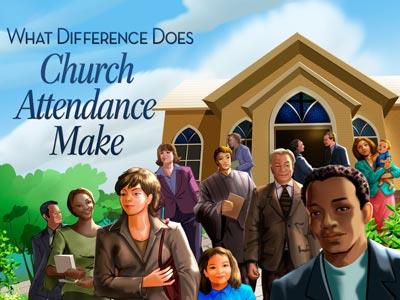-
The Church Of The New Testament - Part 3 Series
Contributed by Sam Mccormick on Feb 8, 2018 (message contributor)
Summary: Part 3 of the series - The Church of the New Testament. This part addresses the question, "What is the Church." There are many conceptual variations on what the church is and what its principal purpose is. But what did Jesus intend to build?
This 13-part series of classes has been many years in the making. About 25 years ago I began in earnest to examine the features, character and characteristics of the church as it existed in its earliest years. As I sometimes do, I kept my notes all along the way, and this series of classes is to a large extent the product of those years of on-and-off studying the subject. Several things in my experience contributed to my interest in making this 25-year study which I will mention along the way, and those go much further back.
There may be some difficulty in using the individual parts of this series separately, although viewer are free to do so if it serves their purposes. But to those whose interest is in knowing what the church was like in its earliest years, I recommend starting with Part 1 - Introduction to the Church of the New Testament and proceeding through the parts consecutively.
I have prepared some slides that I used in presenting the series in a classroom setting before adapting it to use as sermons. I have left my cues to advance slides or activate animations in the notes as posted on Sermon Central. If anyone is interested in having the PowerPoint files with the slides, I will be happy to send them. Send me an Email at sam@srmccormick.net and specify what part(s) you are requesting. Be sure that the word “slide” appears in the subject line. It may take me several days to respond, but I will respond to all requests.
THE CHURCH OF THE NEW TESTAMENT
OUTLINE OF THE STUDY
I. Introduction
II. The Origin of the Church
III. What is the church?
IV. The First Christians
V. Authority in the First Century Church
VI. Problems in the New Testament Church
VII. How the Church Functioned
A. Introduction to Functions
B. Apostles, Prophets, and Teachers
C. False Apostles, Prophets, and Teachers & Various Gifts and Functions
D. More Gifts and Functions
E. Evangelists, Preachers, and Ministers, Servants and Deacons
F. Pastors, Elders, Bishops, etc.
VIII. How the Church Worshiped
===================================
III. What is the church?
*Slide - outline
Two weeks ago we gave a short overview of how “the church” morphed into something radically different from what the church was in its early days. It is evident that for most of the last 2000 years there were people who were well-meaning but misguided, but also powerful operatives within the church who had a very different agenda for the church than its builder, effectively highjacking the church and driving it far from its original design. Paul had warned the elders at Miletus that it would occur:
Act 20:29-30 I know that after my departure fierce wolves will come in among you, not sparing the flock; and from among your own selves will arise men speaking twisted things, to draw away the disciples after them.
Then through the work of numerous reformers the church migrated back to be closer to what the New Testament shows us, but with many variations littering the landscape. Last Sunday we talked about how the church came into being on the day of the Pentecost festival, or “day of first fruits,” to that waiting group of 120 disciples; and how the “first fruits of the gospel” were brought in—3000 that first day.
One of the things we observe about the church of the New Testament is that in every place we read of it, there was a church—not many—but a church. In one of the major cities such as Rome and Ephesus, there may have been a “church” meeting in someone’s house, another in someone else’s house, and so on, but it was considered “one church.” The reason there is a plurality of churches now is that we and they do different things, and do not agree on the things the church is intended to do.
Part of the problem with getting everyone on the same page about what the church ought to do is that there are various ideas about what the church is.
• To some, it’s a location; specifically a place to worship. (Yet Jesus told the Samaritan woman the time was coming soon when the idea of a correct location for worship would be obsolete.)
• Some say it is an organization; others insist that an organization is not a living thing as the church is, but something that is done to give orderliness to things, living or not; and that the church, itself being a living entity, is an organism.
• To some, it’s a charity, one that sits alongside and on equal footing with other charitable organizations. Indeed, the church has that characteristic.
• Some say it is first and foremost an evangelistic platform.
• Or it’s a social setting for people to meet and enjoy the company of others who have similar values and interests. And it is that, and more.

 Sermon Central
Sermon Central



